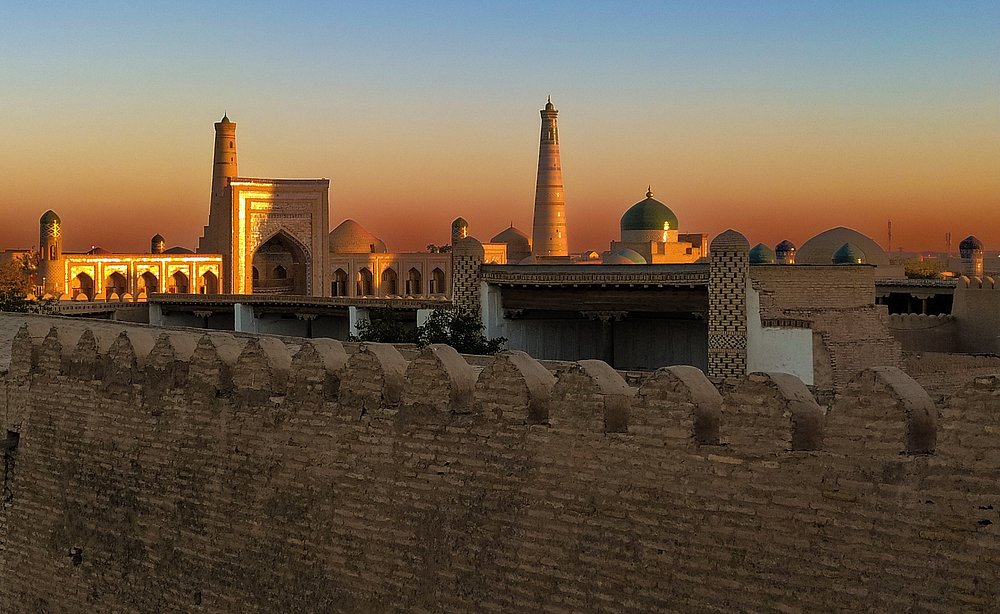Ichan-Qala, the inner fortress of Khiva, Uzbekistan, is a remarkable example of a well-preserved medieval city in Central Asia. Located to the south of the Amu Darya River in the Khorezm region, Ichan-Qala was the last resting place for caravans before crossing the desert to Persia. Since 1990, it has been recognized as a UNESCO World Heritage Site.

The history of Ichan-Qala spans over two millennia, with its construction dating back to the 5th century AD, although much of what is seen today was built in the 17th century and later. The inner town occupies an area of 26 hectares and is enclosed by brick fortification walls that are up to ten meters high. These walls, with their defensive towers and crenellations, provided protection against nomadic raids and desert storms.
Within the walls, Ichan-Qala houses over 50 ancient monumental structures and 250 dwellings. These include remarkable architectural ensembles such as the Djuma Mosque, Oq Mosque, madrasahs of Alla-Kuli-Khan, Muhammad Amin-Khan, Muhammad Rakhim-Khan, and mausoleums of Pahlavon Mahmoud, Sayid Allavuddin, and Shergozikhon. The Djuma Mosque, established in the 10th century and rebuilt in the late 18th century, features a unique hypostyle hall with 212 columns. The madrasahs, which served as social centers, display majestic proportions and simple decorations typical of Central Asian Islamic architecture.
The layout of Ichan-Qala reflects the ancient traditions of Central Asian town building. Its rectangular form, elongated from south to north, is divided by narrow streets and alleys typical of old eastern cities. The domestic architecture of Khiva, with its enclosed houses featuring courtyards, reception rooms with porticoes supported by delicately sculptured wooden posts, and private apartments, is also an important attribute of the property. These houses, dating from the 18th to the 20th centuries, showcase the morphological variants of traditional Central Asian residential architecture.
The outstanding qualities of Ichan-Qala are not only due to its individual monuments but also to the incomparable urban composition and the harmony with which major constructions of the 19th and 20th centuries were integrated into the traditional structure. This harmony and the preservation of its classical traditions make Ichan-Qala a unique testament to the lost civilizations of Khorezm and an exceptional example of Islamic architecture in Central Asia.



































